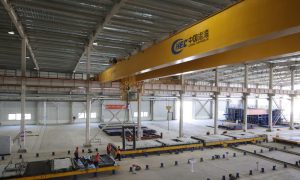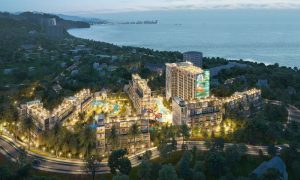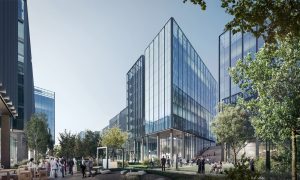Qatar emerges strongest
While all six Gulf states? construction industries have been severely impacted by the global economic downturn, some are recovering faster than others; namely Qatar. Industry consultancy Rider Levett Bucknall weighs up opportunities and challenges in each market
/* Style Definitions */table.MsoNormalTable{mso-style-name:”Table Normal”;mso-tstyle-rowband-size:0;mso-tstyle-colband-size:0;mso-style-noshow:yes;mso-style-priority:99;mso-style-qformat:yes;mso-style-parent:””;mso-padding-alt:0in 5.4pt 0in 5.4pt;mso-para-margin-top:0in;mso-para-margin-right:0in;mso-para-margin-bottom:10.0pt;mso-para-margin-left:0in;line-height:115%;mso-pagination:widow-orphan;font-size:11.0pt;font-family:”Calibri”,”sans-serif”;mso-ascii-font-family:Calibri;mso-ascii-theme-font:minor-latin;mso-hansi-font-family:Calibri;mso-hansi-theme-font:minor-latin;}
The outlook for the GCC construction industry is improving, with Qatar coming out on top, according to the Gulf States Report 2010 by international consultancy Rider Levett Bucknall.
The report covers local property and construction market data on Bahrain, Kuwait, the UAE (focusing on Abu Dhabi and Dubai), Oman, Qatar and KSA.
According to the data, all six Gulf states had their incomes severely affected during the global financial crisis by the plunging oil price, which hit a low of US $30 per barrel (p/b) in early 2009. But, oil reached an 18-month high in April 2010 at around $85 p/b.
With a predicted GDP growth rate of 18.5% for 2010 as gas exports increase, Qatar has emerged as one of the strongest-performing countries in the world, asserts Rider Levett Bucknall chief executive Lance Taylor: “Qatar’s construction market is expected to display favourable growth rates over the next few years, driven by planned strategic infrastructure projects worth hundreds of billions of Qatari riyals on the back of higher oil and gas revenues”. The Big Project takes a look at how each of the markets is faring in terms of finance, cancelled projects, tenders, opportunities and building-material prices, according to the report.
Busting Bahrain’s debt problem
Similar to other countries in the Middle East, the construction industry in Bahrain is suffering from slow and late payments – between nine and 12 months – to contractors, subcontractors, suppliers and consultants. This places enormous strain on the industry with cessations of work and instances of individuals being pushed to the brink of bankruptcy. Among the casualties of the global economic crisis have been the $1 billion Salam Beach Resort by Sama Dubai and the $300 million Bahrain Business Park. Furthermore, First Bahrain Property Group has also cancelled its $450 million mixed-use Uptown project in the Seef District.
On the upside however, there is strength in the industrial, logistics and warehousing sectors, which have benefited from the recent opening of Khalifa Bin Salman port and its proximity to the airport which underpins demand in the adjoining industrial area of Hidd. Construction of the 312-bed King Hamad Hospital is pushing ahead, as is the 150,000m³ expansion to the Tubli waste-water treatment plant.
The commercial market in Bahrain has failed to develop significantly after the short-lived peak in 2008 and has all but dried up with many of its projects having been put on hold or applying for a change in use in the hope of generating a return on investment.
Kuwait; frugal but frustrating
Despite recovery in oil prices and the expectation that Kuwait will generate a KWD 6.0 billion (more than $20 billion) surplus in 2010 — its 11th consecutive surplus in a row — there has been disappointment in the market due to a lack of spending on infrastructure and the public sector.
However, while previously stymied by continuing rifts between the country’s legislature and its government, both now seem to be aware of the need to increase private-sector involvement in public projects, and the importance of strategic public-private partnerships with domestic and foreign entities.
Subsequently, important project funding has been approved with $98 billion allocated over the next four years to major upgrades in critical infrastructure, including the new Madinat Al Hareer (City of Silk) business hub in Subiya, the national energy grid and water system, construction of a new railway network, the construction of a container harbour and development of seaports and a 25km causeway.
Additional spending has also been proposed for the health and education sectors while the Housing Committee of the National Assembly recently passed a draft bill for the construction of 10 cities. These plans not only have the potential to significantly change the Kuwaiti economic landscape, but will attract meaningful foreign investment and expertise from major trading partners such as Japan.
As these major projects come online and the market begins to respond to the surge in activity, the private sector, which has remained constrained since the financial crisis and exacerbated further by government restrictions, should see a revival over the next two-to- three years. This will have a positive flow-on effect to the commercial and retail sectors which have exhibited subdued activity consistent with much of the region. Concerns still exist over the ban imposed on private firms purchasing existing property.
Oman has projects but pricey products
The Omani government sees investment in infrastructure projects as essential to maintaining sustainable economic growth and has allocated 937 million Omani rials ($2434 million) to the continuation of large projects.
This includes major transport infrastructure improvements with new rail links between Oman’s main industrial centres and other GCC countries, and upgrading and expanding the capacity of road networks.
Priority has also been given to the continued development of the nation’s seaports with a new port being built in Dqum, while existing ports in Sohar and Salalah have been targeted for expansion. Coinciding with this, development of Oman’s aviation infrastructure will produce new airports at Sohar, Ras Al Hadd and Dqum, while the on-going expansions of international airports in Muscat and Salalah continues. Subsequently, solid growth in the construction sector is predicted for the coming few years with estimates depicting annual increases of around 2.7%.
However, building materials shortages have placed upwards pressure on supply costs in recent years with continued shortfalls driving further increases into the foreseeable future.
The Omani government’s policy of restricting market access to overseas cement suppliers in order to support local industry continues to reinforce high tender prices.
Qatar back to health and wealth
With a predicted GDP growth rate of 18.5% for 2010 as gas exports increase, Qatar remains one of the best performing countries in the world, although experts warn of the possibility of the economy overheating in the absence of government prioritization of infrastructure spending. However, with inflation under control and the money supply fairly tight as banks continue to take a cautious approach towards consumer lending, the signs are positive the economy will not reach boiling point.
In line with this confidence, Qatar’s construction market is expected to display favourable growth rates over the next few years, driven by planned strategic infrastructure projects worth hundreds of billions of Qatari riyals on the back of higher oil and gas revenues. Private sector projects have been curtailed by the 2009 downturn, but public sector spending is benefiting from a reduction in construction costs in current major project tenders.
Major projects underway in Qatar include Doha International Airport, Qatar-Bahrain Friendship Bridge, Qatar Convention Centre, The Pearl Qatar, Qatar Science and Technology Park, and the Musheireb (Heart of Doha) project.



















